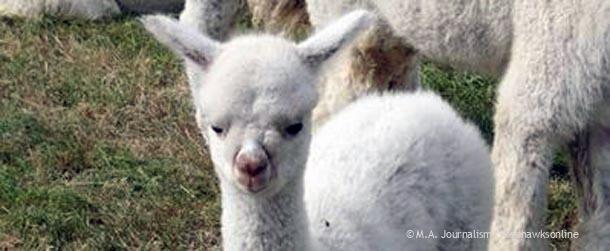Adorable creatures inspire aggression, study finds
“You’re so cute, I could just… eat you up, squish you, pinch you, squeeze you to death.” Is it possible to feel happiness or joy so intensely it manifests itself as aggression? Have you picked up a puppy and ever felt the inexplicable urge to squeeze it? Do you have a crazy aunt who likes to pinch your cheek? Whether it’s grandma goosing baby’s cheeks or giving your darling new puppy a nibble on his ear, it simply can’t be helped. Nearly everyone has experienced the undeniable and compelling impulse to give something little, cute and fluffy a gigantic squeeze.
Now, a recent study published by two Yale University psychologists confirms this compulsion and gives the phenomenon a name, “Cute Aggression.” It is the irresistible urge to express “violence” in the form of strong squeezes, love bites, pinches and other physical responses to the cutest, most adorable animals, babies and loved ones.
“Cute Aggression” compels us to vocalize aggressive sounds like “grrr,” but the scientists say it’s often accompanied by declarations like, “I could just squeeze my puppy to pieces.”
“When my mom, my brother and I went to see my aunt’s new baby in the hospital, it was the cutest baby ever – grrrr – I loved it. I just wanted to hold him and love him with all my life,” said senior Jahleel Davis.
“I experienced ‘Cute Aggression,'” said freshman Ruby Firth. “We’d just adopted our recent Shar-Pei, named Jing. I’d never known such a loving or kind Shar-Pei, only beautiful ones. Jing was also the smallest Shar-Pei I’d ever seen. I was so excited she was finally ours and squealed with joy as I often continue to do and feel. I smashed her nose with a big kiss!”
In the Yale study, researchers asked 109 people to hold a sheet of bubble wrap while looking at a slide show of animals. Researchers monitored participants’ responses by how many bubbles they popped in the sheet of bubble wrap while looking at specific images. Study participants looked at a slide show of animal photos deemed “neutral,” photos like a moose in the woods, a mountain goat, a buffalo on the range. The participants were also exposed to what researchers categorized as “cute” images, a puppy napping in a shoe, a kitten with a milk mustache, a chimp wearing glasses, a newborn litter of kittens cuddled together and yawning.
When faced with the “cute,” animal images, people did something funny. They popped significantly more bubbles than when looking at the “neutral” photos. The cuter the participant thought the animal photo to be, the more aggressive they responded, and the more bubbles they popped. Person after person looking at the adorable “cute” photos couldn’t stop their fingers from pinching and popping bubbles. Some almost lost control, popping wildly.
Is this phenomenon real? Scientists believe it is; however, it’s nothing to be alarmed about. It’s natural for some people to give a family member a huge squeeze after not seeing that individual for a long time. People been known to squeeze a hand very tightly or even rub the top of the head of a loved one with extreme vigor. These rough gestures are, strangely, an expression of affection.
“When I first got my dog, he was the cutest little thing ever, like the size of a Webkinz and was super soft,” freshman Elie Laddusaw said. “Whenever I would pick him up or he would jump onto my lap, I just wanted to hug him and squeeze him. But I couldn’t. He was just so tiny and fragile!!”
Some things are so cute that people just can’t stand it. But is this violence or is this love?
“My guinea pig is so cute that I want to squeeze it all the time, but it’s too small, so I can’t,” said freshman Asha Womack.
While the name “Cute Aggression” may suggest something worrisome or harmful, it’s simply a label the Yale team used to define their findings. The prevalence of “Cute Aggression” doesn’t necessarily mean people actually want to harm their loved ones or family pets. Rather, the Yale researchers claim, it could be a protective response, the brain’s way of venting extreme feelings of giddiness and extreme happiness. You see something so cute, and you’re overwhelmed by it and the need to vent that feeling.
“There’s a strong distinction, a big difference, between something like ‘Cute Aggression’ and cruelty or abuse,” said Lou Dierking, counseling psychologist. “As psychologists, we categorize Cute Aggression as more closely aligned with affection and love, a burst of affection, from someone who adores and loves their animal or child. As a measure of love, this is healthy really because it comes from our hearts. However, acts of cruelty, be it animal or toward humanity, are a purposeful desire to inflict pain and suffering. These acts demonstrate deep and complex behavioral and psychological disturbances. Suffice it to say at this point, I’d see ‘Cute Aggression’ as endearing and protective, expressing a more positive emotion, while cruelty is the exact opposite.”
Another theory scientists are exploring is the expression of a positive emotion in a negative way, like when you’re so happy you cry. Whatever the theory, the phenomenon is real yet not overly concerning. But, a word of caution: the next time you see something, or someone, in the hall that’s so cute and the feeling overwhelms you, make it a light squeeze.

